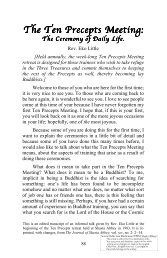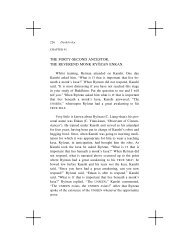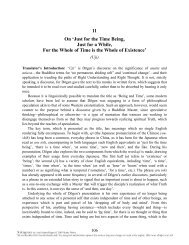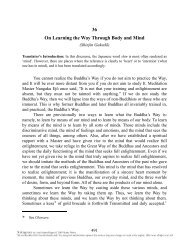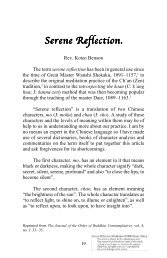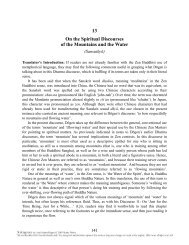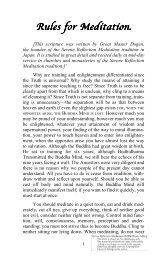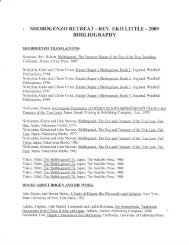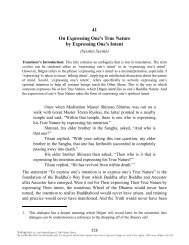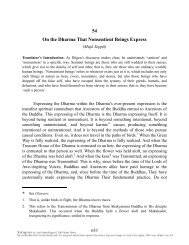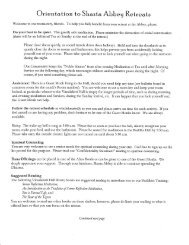SO TO ZEN - Shasta Abbey
SO TO ZEN - Shasta Abbey
SO TO ZEN - Shasta Abbey
Create successful ePaper yourself
Turn your PDF publications into a flip-book with our unique Google optimized e-Paper software.
Zen and Oriental Culture 37(1192Ð1333) when the peace was almost continuously brokenby the many civil disturbances which were occurring one afteranother. A distinct culture, based on a practice of Zen meditation,arose which embraced such varied cultural aspects asarchitecture, sculpture, painting, calligraphy, landscape gardening,Noh drama, renga poetry, haiku poetry, pottery, koto,shakuhachi music and the tea ceremony. Zen training emphasizesconcrete action rather than speculative thought and,believing that life and death are complementary to each other(J. sh‡ji ichinyo), aims at overcoming them. It admires boldactions and is content with plain, simple living with due importanceattached to the proper observance of ceremony andetiquette. This attitude of Zen could not help but influence thelife of the warrior (J. samurai).The warrior families were closely connected with politicsin general without drawing a distinction between the centralgovernment and local feudal governments. The prevailingpolitical theories of the day belonged to the Chu-tzu School(J. Shushi) which is a school of Confucianism that developedunder the influence of Zen. Likewise, in the Yang-ming School(J. Y‡mei) of philosophy which arose during the Ming Dynasty,there is also a marked Zen influence. The Kanazawa Libraryand Ashikaga College are also the fruit of this mingling of Zenand Confucianism. The Gosan Literature (learning pursued inthe five great Zen monasteries of Ky‡to during a period of




